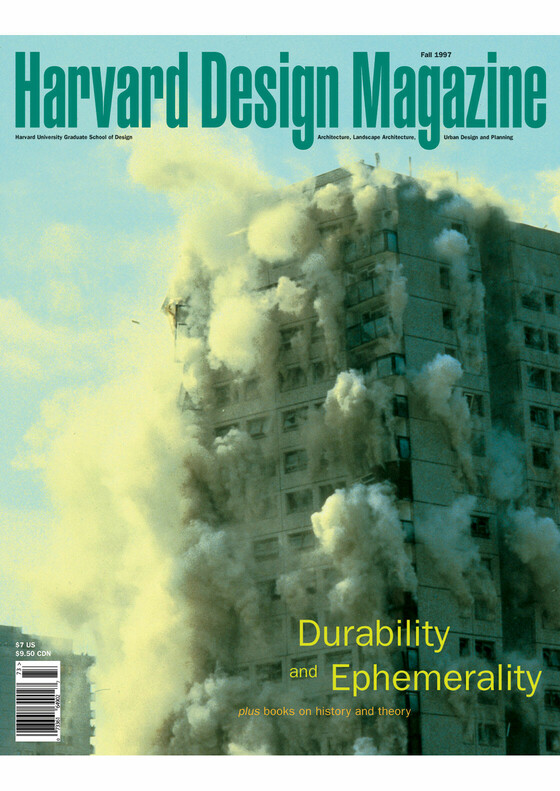Heimlich Manœoeuvers by Kari Jormakka
3: Durability and Ephemerality, plus Books on History and Theory
Out of stock

The creation of place, of cities, buildings, and landscapes, has traditionally been conceived of as a conservative art, as the creation of lasting artifacts that embody the achievements and ideals of a civilization. But given the volatility of our age, and indeed the widespread perception that one era is ending and another beginning, we thought it timely to explore this idea—to explore the twin themes of durability and ephemerality. How are attitudes to the durability of artifacts changing? How is the built environment itself changing as a result of evolving ideas? Has durability become more valued as a hedge against the unease of rapid change? Or has it become less valued, perceived as irrelevant, nostalgic, unnecessary? How do such attitudes influence the styles in which we design buildings and landscapes? How do they influence the perceived role of the public and private realms? How do economic factors, e.g., the globalization of capital, the economics of real estate development,the costs of materials, figure in this? These are some of the questions we posed to contributors, who answer them in various ways in the essays that follow.
Luis Fernández-Galiano
Camilo José Vergara
Angelika Schnell
Demetri Porphyrios
Kenneth Frampton
Henry Petroski
Ellen Dunham-Jones
Alexander von Hoffman
Gavin Stamp
Marvin Trachtenberg
Sandy Isenstadt
Thomas J. Campanella
Edward Ford
T. Kelly Wilson
Botond Bognar
Liane Lefaivre
George Baird
Mark Mulligan
Richard Ingersoll
Andrew Herscher
Thomas Fisher